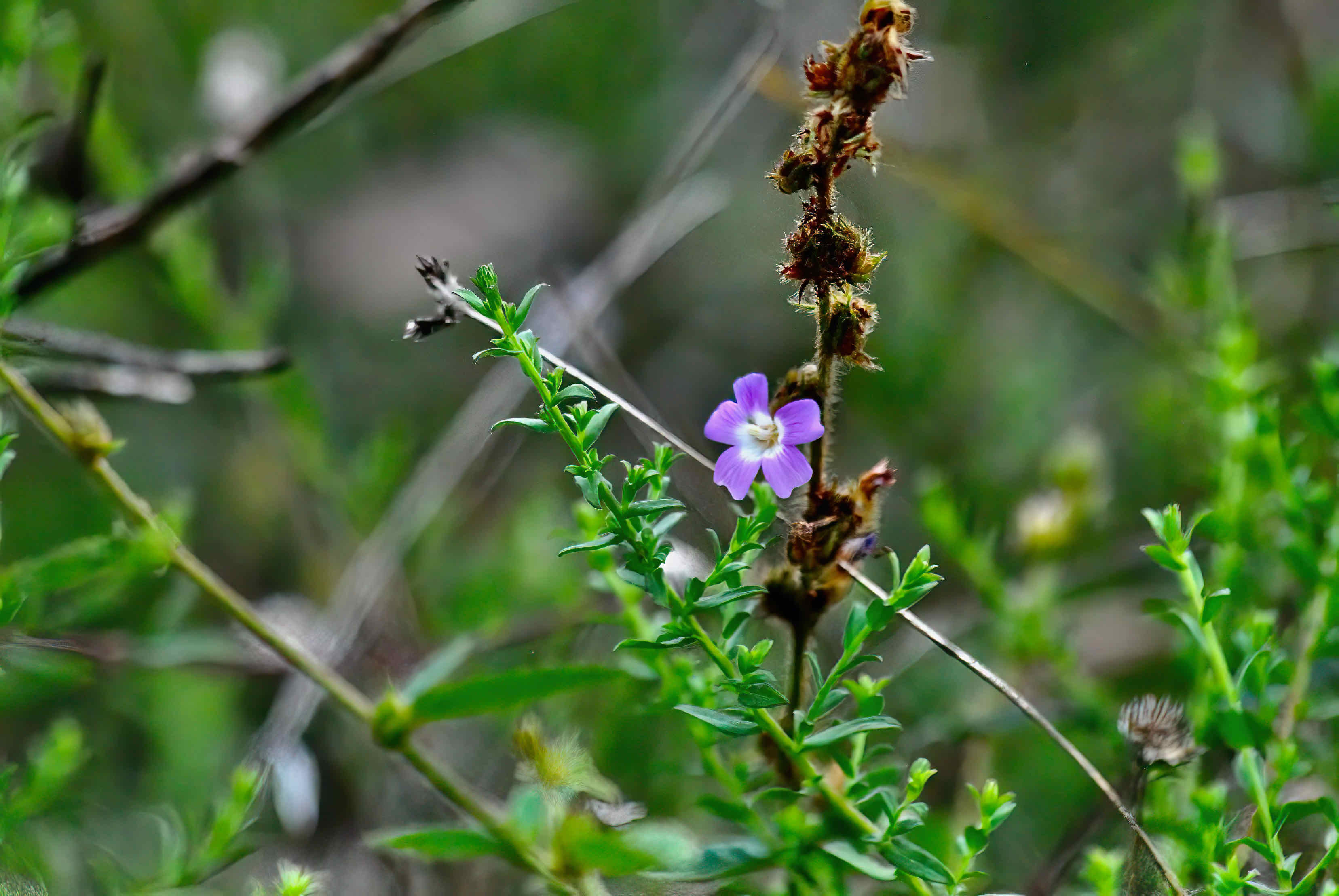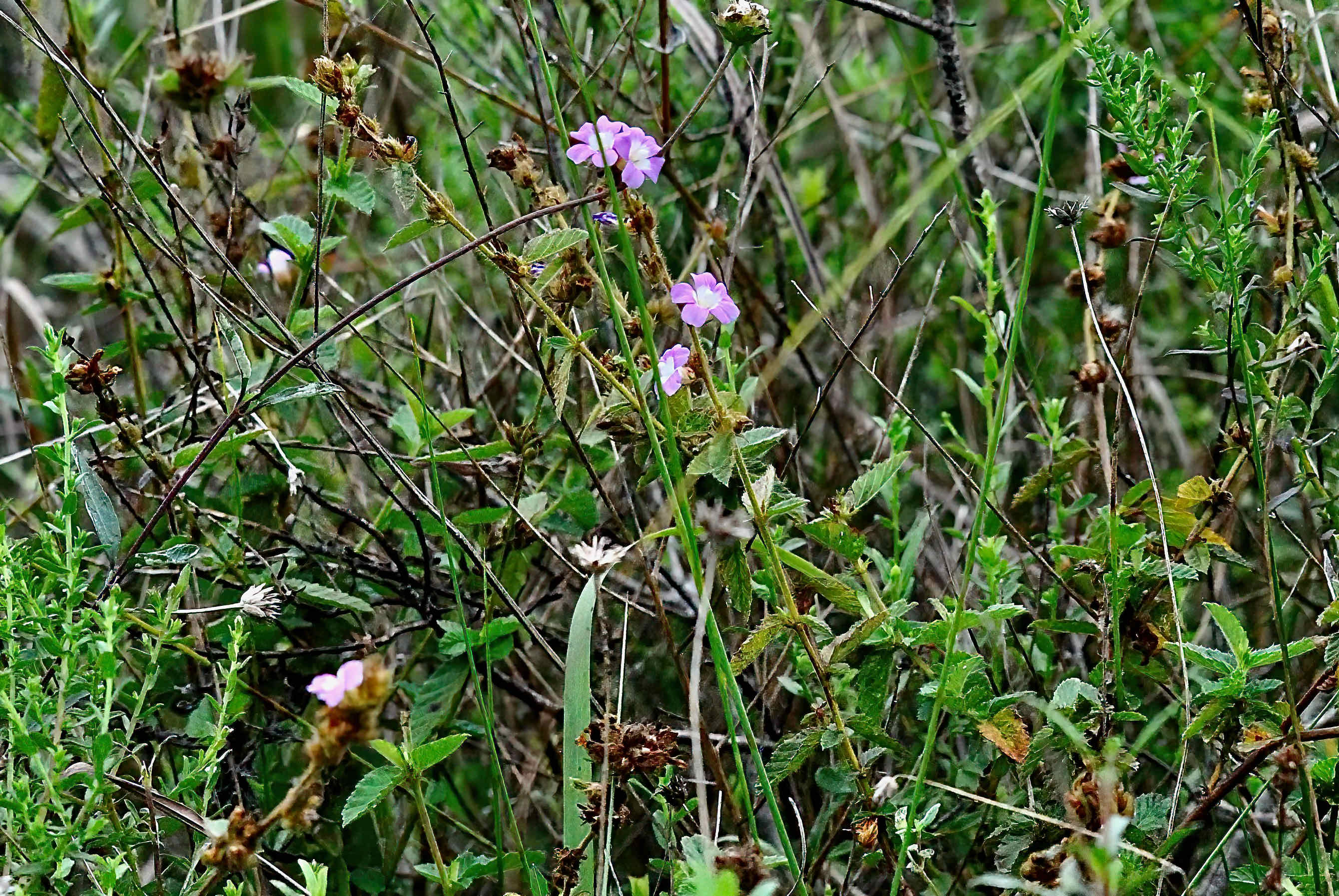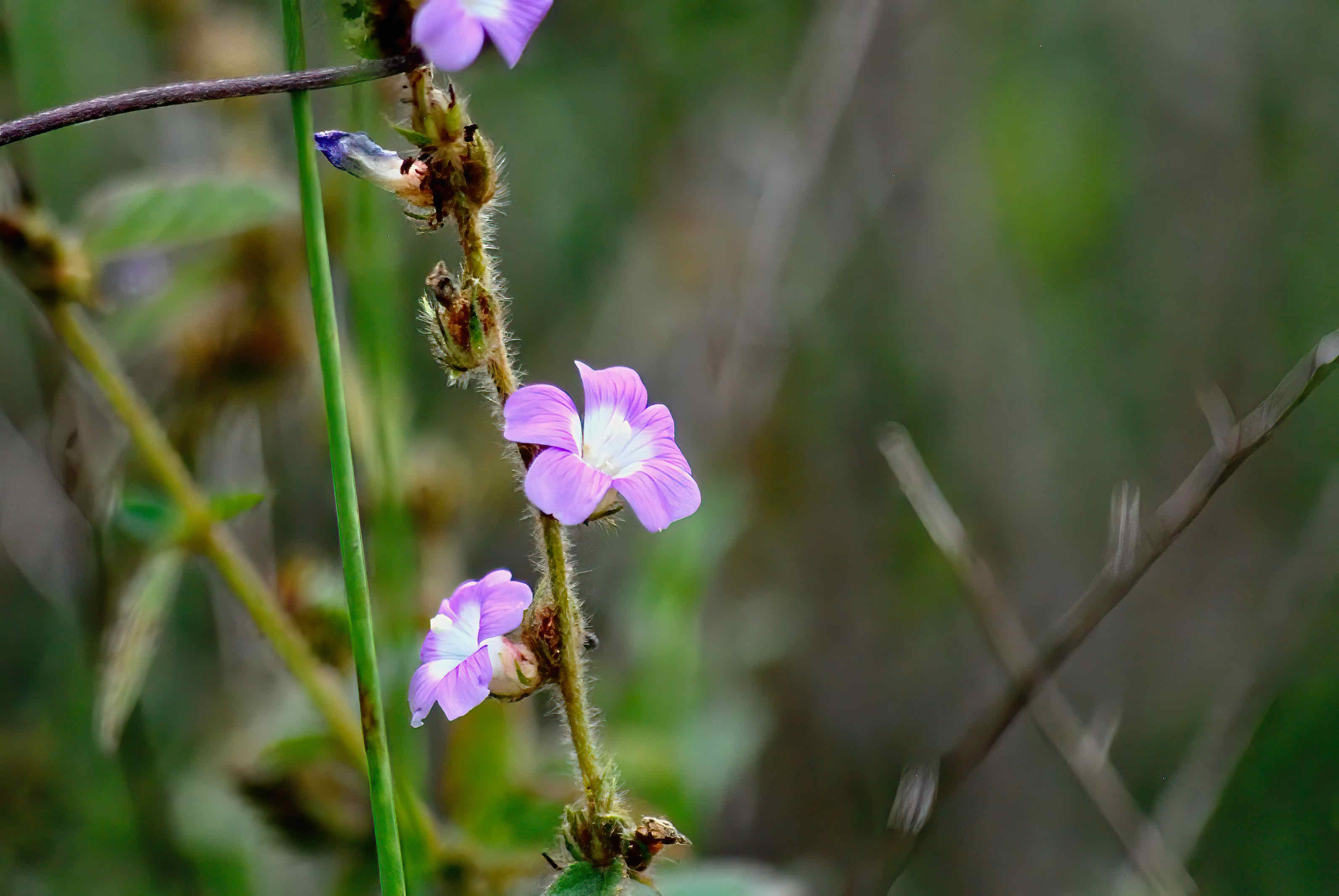
Bretonica peluda, photographed at Florida Panther National Wildlife Refuge, Naples, Collier County, in October 2015."
Bretonica peluda, AKA Melochia spicata, isn’t a plant that gets much attention despite good looks and showy flower spikes that are magnets for butterflies and other nectar-loving insects. It also has a reputation for being an easy plant to grow, but it's barely raised a blip on the proverbial radar screens of Florida's commercial growers and native plant enthusiasts.
It is, by and large, a ground-hugger, rarely reaching more than a foot or so off the ground. It’s also a rare plant, so rare that the Institute for Regional Conservation in Delray Beach considers it imperiled in South Florida. And it does suffer from a common name so odd that it seems like it should be a second scientific name. If a rose had been called bretonica peluda instead, Shakespeare would have had to have found another flower.
It is a Florida native, mostly found in the western half of the Peninsula roughly from Tampa Bay to Collier County, but also in Suwannee County in the Panhandle. Miami-Dade is the only county on the Atlantic side of the state where it’s found.
The U.S. Department Agriculture includes Georgia within the native range of bretonica peluda, but provides no county data as to how widespread it might be. It’s also a native of the Caribbean, including Puerto Rico, plus Mexico, Central America and South America.
In northern parts of its range, it’s an annual, flowering summer into fall; in the south, it’s a perennial and flowers year-round.
As to that odd common name, peluda is Spanish for hairy, inspired by the soft hairs that cover the leaves and stem. Translate and you get hairy bretonica.
Where bretonica comes from we’re not sure but it could be in reference to a region in France where Breton, a Celtic language, is spoken. Or it could be something entirely different. As to the scientific name, Melochia has its roots (pun not intended) in an Arabic word for mallow, plants we commonly refer to as hibiscus. Spicata means spike, as in flower spike. Combine them and you get spike mallow, or something of the sort.
The flowers have five petals in various pinks and violets with prominent violet veining running through them, and a white center. The leaves are somewhat oval in shape, with a short leaf stem, or petiole. They’re about an inch to an inch-and-a-half long and come to a sharp point. Veining is prominent. The leaves are also serrated and as noted above, hairy. Stems are somewhat woody. Favorite habitats include sandhills and flatwoods.
Bretonica peluda is not cultivated, a fact that seems to stump some experts because, as we noted above, it’s not a picky plant to grow and comes with a multitude of benefits. Nor has it any other human uses that we were able to document.
On the other hand, bretonica peluda has a better-known cousin, Melochia tomentosa, commonly called teabush, that’s becoming popular as a cultivated plant. The flowers are similar in shape and size, but teabush flowers are a deep pink. It’s also more upright than bretonica peluda and has been known to reach as tall as nine or ten feet.
Bretonica peluca is a member of Malvaceae, the mallow or hibiscus family.
Florida Panther National Wildlife Refuge



